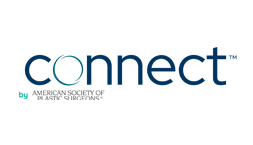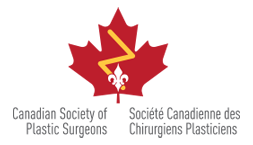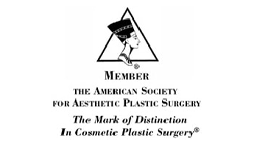- Home
- Body Plastic Surgery Procedures
- Body Contour Surgery
- Liposuction Cosmetic Surgery Toronto
Liposuction Cosmetic Surgery Toronto
Liposuction is a superb technique for spot-reducing areas in which there is excess subcutaneous fat. This can be done for cosmetic purposes to improve body contour or it can be done to improve function where access fat is limiting activity or causing problems in hygiene.
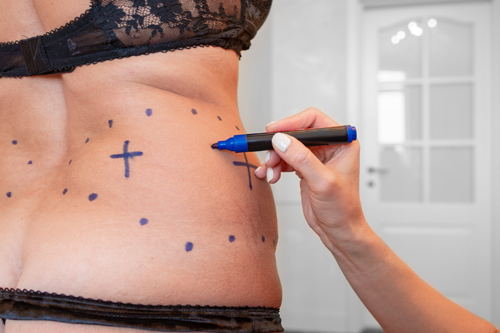
What liposuction does not do
Liposuction is not used to decrease visceral fat deposits that are deep to the muscle layer; it is only used to reduce fat above the muscle layer. It is possible to achieve some tightening of skin either through the inherent elasticity of the skin or the injury that is applied to the dermis and septae of the subcutaneous tissue but on its own it is not a technique that will directly improve skin irregularities like cellulite.
Are you a candidate for liposuction?
There are ideal candidates for liposuction, and there are others who can benefit from liposuction without necessarily being ideal candidates. The ideal candidate is generally healthy, is near ideal body weight and is seeking reduction of excess fat in an area where there is good skin quality without stretch marks or laxity. Nevertheless, the majority of our patients are not ideal patients for liposuction, but can still benefit provided they have realistic expectations of the outcome. Even if significantly overweight, you can benefit from liposuction if your weight is stable, and you have areas that are disproportionately large relative to the rest of your body.
Techniques for liposuction.
There are a variety of different techniques used by surgeons, and the consensus among experts is that the quality of the surgeon is far more important than the technique that is used. Studies have shown that the use of power devices does not reliably provide better results than, non-power-based techniques, and indeed the risk of complications is higher when power tools are used.
1. Dry liposuction.
Dry liposuction is the original technique performed under general anesthetic in which fat is removed directly with a metal tube that has holes in it and suction applied to the end. This is still occasionally performed in areas in which very small and precise amounts of fat must be removed.
2. Tumescent liposuction
This procedure can be performed under local anesthetic and involves infiltration of a large amount of fluid containing local anesthetic to stiffen the subcutaneous layer (tumesce). This is useful in touchup procedures to reduce fat in small areas. This was previously described as a technique to treat larger areas without the need for intravenous fluids, however, this is rarely performed as it does not allow the same accuracy for great cosmetic results. Its purported safety relative to techniques in which general anesthesia is used is because only small procedures are performed under tumescent technique.
3. Super wet liposuction.
This is now the most typical technique of liposuction in which intra-venous sedation or general anesthetic are provided, and wetting solution, including normal sailing and local anesthetic is infiltrated subcutaneously. This allows for less blood loss during liposuction and greater comfort for the patient after the liposuction because of the residual anesthetic effect
4. SAFE liposuction
In this procedure, liposuction is similar to super-wet liposuction with some added maneuvres. The ‘S’ in SAFE stands for ‘Separation’ in which the basket-tipped canula is used to break the compartmentalized fat into a ‘smoothy’ like consistency of fat cells, and the cannula tip can be intentionally used to injure the dermal undersurface of the skin, triggering a skin tightening effect. This is followed by ‘AF’ aspiration of fat in which the live fat cells that have been freed up are now easily removed by suction. Any fat cells remaining are alive, and will function as fat graft, even if they are not in their original location. If there is any lumpiness that is palpable, the basket canula is again used to break up these lumps (‘E’ equalization). When this is combined with a compression garment, the subcutaneous fat will now heal in a smooth layer under the skin and the injury of the undersurface of the skin will provoke a healing response that causes skin to tighten so that there is less excess skin after the removal of the fatty tissue volume.
5. Low injury techniques
A number of techniques have arisen in which the intent is to minimize injury in the hope that there would be less pain and swelling after surgery. These techniques specifically do not intend to trigger a skin tightening effect and would seemingly have low application in areas which do require skin tightening. Air sculpting, and waterjet liposuction are two techniques in this category.
6. High injury techniques.
Several techniques have arisen which intend to cause injury to the surrounding tissue. Laser and ultrasonic techniques have been used, the application of radio frequency heating after liposuction has been described, and the use of plasma to effectively injure the areas after liposuction have been described. These do carry higher risks of skin burns and nerve injury, and in particular they have the flaw of leaving behind dead fat cells at the end of the procedure. As a result, it is impossible to predict what volume of fat will continue to survive after the surgery, and so the likelihood of indentations and subcutaneous scarring are much higher. Power tools have an additional advantage for the surgeon in that there is less effort involved much as a spray can is able to cover an area more quickly than a paintbrush. To extend that analogy, a paintbrush is a much more precise tool, and is generally favored where precise results are desirable.
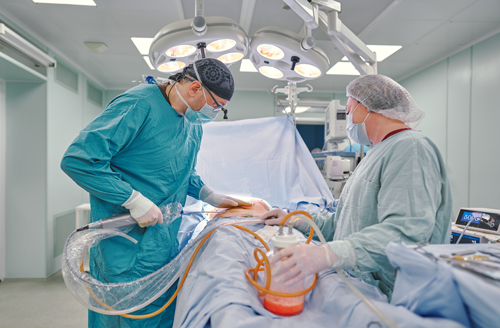
Alternatives to liposuction.
It is not trivial to say that weight loss is a good alternative to liposuction. A patient who has excess fat in all areas of their body and no area or areas of particular excess is far better suited to lose weight than to have each area of their body treated with liposuction. Liposuction remains an ideal tool when there is a disproportion of fat. In this way, even if the patient gains weight, they will not gain much weight in the area that was treated (the fat storage cells are gone) and so will remain proportional.
1. Coolsculpting, and Sculpsure
Techniques that use either external cold application or can generate heat in the subcutaneous tissues are able to kill fat cells. However, the results are notoriously irregular as these techniques damage pockets of fat rather than a consistent layer, and so the procedure must be performed repeatedly to eventually obtain a smooth result. The costs and downtime from multiple procedures would vastly exceed that of a single liposuction procedure, but this approach can be appealing to someone who has who frightened of a procedure even under local anesthetic.
2. Enzyme injections
There are enzymes which are specifically effective at dissolving fat that can be injected subcutaneously and have been used with some success in small localized areas like fat under the chin. Again, these would appeal to someone who is too frightened to have a procedure under even local anesthetic, and they are not precise, as it is difficult to control where the enzyme goes once it’s underneath the skin. Furthermore, it’s success relies on killing fat cells rather than removing them and as such, it would take several months to see the final contours.
What areas are popular for treatment.
Liposuction does extremely well in areas where there are excess fat deposits and thick skin, the hips and lateral thighs and back do very well with liposuction. The abdomen can be treated provided there is not loose skin as seen after carrying a large baby or massive weight loss. The calves of the legs respond well to liposuction as does the area under the chin. Arms can be reduced as can the inner thighs, but the loose skin on the inner thigh and arms can be problematic and even techniques which are good at causing skin contraction will leave results that are less than ideal because the skin heals in an irregular fashion. Challenging areas to treat include the lower cheek jowls, and generally that can only be performed along with a lower face and neck lift. The buttocks do not respond well as releasing the fibrous supports of the skin can exaggerate sagging of the buttocks skin. Nevertheless, this can be an appropriate area for treatment in the right patient. We have also treated the mons pubis (fatty upper pubic area/FUPA) in women, as well as in men who are seeking to create the appearance of a larger penis. The front and back of the thighs are generally not treated unless a thigh lift is also performed to correct the excess skin that would result from this procedure. Breasts will respond well to liposuction and can be an alternative to open breast reduction in selected patients.
Details of the procedure
Our preferred technique is SAFE liposuction. To be clear, this procedure is not given the name ‘SAFE’ because it is uniquely lower risk, but rather because of the separate steps involved. Our patients are generally receiving general anesthetic although sedation or even tumescent technique is possible. Small holes approximately 4 mm in length are made, two or three per area that is treated and wetting solution is infiltrated under the skin. The basket tipped canula is then used to effectively rake the subcutaneous fat. This is done to break up the fat which often exists in multiple layers, separated by fibrous septa sheets, and the raking maneuver is also applied to the under surface of the skin to create an injury that will cause the skin to contract. This is generally the most time-consuming and laborious part of the procedure. With this complete the fatty tissue is much like a smoothie underneath the skin and the aspiration of fat is performed to reduce the overall volume and create as smooth an effect as possible. If there remain areas where fat is in clumps, it is broken up again with the basket canula and the remaining fat is smooth out manually or removed. If a particular need for skin tightening is appreciated (e.g. upper arms) we will occasionally apply radio frequency heating (Thermitight) to the skin to prevent skin laxity. The incision holes are stitched and covered with Band-Aids and then a compression garment is applied. The compression garment is worn about 20 hours a day for three weeks, although it can be removed as necessary for social events, etc. We do not recommend massage in general, and have not found it to be necessary.
Risk and limitations.
Power techniques which involve oscillating-tips, ultrasonic heat, laser, radio frequency, and plasma all carry risks of injury to the surrounding tissues, including nerves and skin. Liposuction does carry the risk of perforation into surrounding structures if it is not properly and safely performed. Patients who have had multiple abdominal procedures and may have hernias require careful consideration as the hernia which is lying in the subcutaneous plane is vulnerable to perforation. The small scars used to introduce the canula can sometimes be visible depending on healing. Bruising and swelling is expected after the surgery but under SAFE technique we have never had a hematoma or seroma that required treatment (Seroma fluid collections are common using power tools). Skin regularities are a possibility after liposuction and indeed, approximately one-in-20 patients will require some sort of touchup to reduce some area of excess fat or more rarely to graft an area where there’s a deficiency. This does not always occur because of deficiencies in the procedure but can occur if the compression garments are not worn in a way that provides even compression or can occur a patient wears tight clothing or a belt over areas that were treated. It is unusual for skin to hang loosely after a procedure but skin tightening does not always appear smooth. Skin with poor elasticity is more like the skin of a grape which once deflated appears as a raisin. Allowance for this is necessary in areas where there is poor skin elasticity like the inner thigh and upper arms. Systemic consequences from surgery would be unusual unless large areas of the body were treated. It is traditional to refer to liposuction above 5 L as large volume liposuction, but in practical terms this is highly deceptive and does not provide a useful threshold for safety. A patient who weighs 250 pounds could have 5 L of liposuction taken off their hips and recover very quickly. The removal of 3 L from 100-pound patient who has several body areas and a large body surface area treated may go into shock from such a ‘smaller’ procedure. Judgement by the surgeon is paramount in avoiding these complications.
Recovery.
When only one area or pair of areas is treated, patients usually return to work the next day with their garment on. If multiple areas are treated, there is usually sufficient discomfort that it might be three or four days before they would feel comfortable returning to work. Shower is possible the day after surgery provided the patient will be able to reapply their compression garment. It would be unusual to return to the gym in the first three weeks as it would be uncomfortable to perform exercise or sports, but walking and daily activities should be unrestricted. Massages are not necessary and indeed can increase scar formation due to the irritation of healing tissues. Properly worn garments are essential. We will provide the initial garment and will assist patient obtaining subsequent second stage garments, which can be necessary as fat loss from the surgery creates looseness in the garments. We generally see our patients four or five days after surgery to remove sutures and then again three weeks after surgery to determine whether continued use of the garment would be of benefit. This is used in areas like the breasts, arms or thighs where skin laxity is a problem and further support may be beneficial
Long-term issues.
Liposuction produces changes in body contour which are permanent. Even if you gain weight in subsequent years, you should still benefit from the liposuction as the area that was treated will experience less volume gain as the fat cells are no longer there to store the excess fatty tissue. By corollary, it is not uncommon for people to gain weight after liposuction. If you are in the habit of deciding on dieting and exercise based on how your jeans fit around your waist and now they fit much better, you are likely to be less careful and prone to gain weight. The weight gain will be in areas that you are not used to monitoring, but after gaining 10 pounds will discover that your arms are chubby or your calves are chubby. For other people liposuction acts as a catalyst to an improved lifestyle as they get immediate results from the procedure and are now motivated to go to the gym as muscle development is now visible.
Frequently asked questions.
Is liposuction good for cellulite?
Cellulite represents the indentations in skin that occur because fibrous bands restrict the expansion of skin in areas of weight gain. Performing liposuction would not predictably improve this appearance and can cause irregularities through the skin now loose and hanging from the same bands.
Can liposuction be used for breast reduction?
We often combine liposuction with breast production, as it is an ideal technique for reducing excess fat along the lateral edges of the chest wall. Liposuction can also be used to reduce breast size sometimes by several cups sizes if the breasts are primarily fatty. We do not recommend it when there is a need to lift the breast at the same time.
Does it matter what type of surgeon does the surgery?
Liposuction should only be performed by a Plastic surgeon with expertise in liposuction. Not all plastic surgeons have this expertise and you should seek several examples of a surgeon’s work in patients who have a similar shape and size to you to assess their expertise in this area.
Is the surgery better performed in the office or in an inpatient hospital?
An inpatient hospital is a consideration when 5 to 10 L of fat are being removed in one operation as it allows for more careful monitoring of blood pressure and fluid status. In other respects, an accredited office facility is ideal for liposuction.
Is general anesthesia better?
Liposuction is an artistic endeavor, and it is difficult to focus on artistry if we must stop repeatedly to adjust for a patient with an itchy nose or a sore back.
How to avoid disappointment?
Disappointment often arises from unrealistic expectations. Your consultation should focus on this topic. This is the most important issue in achieving results that are gratifying. If you are 60 years old and have lost 40lbs, liposuction on your inner thighs to create ‘gap’ is going to create some skin irregularities.

